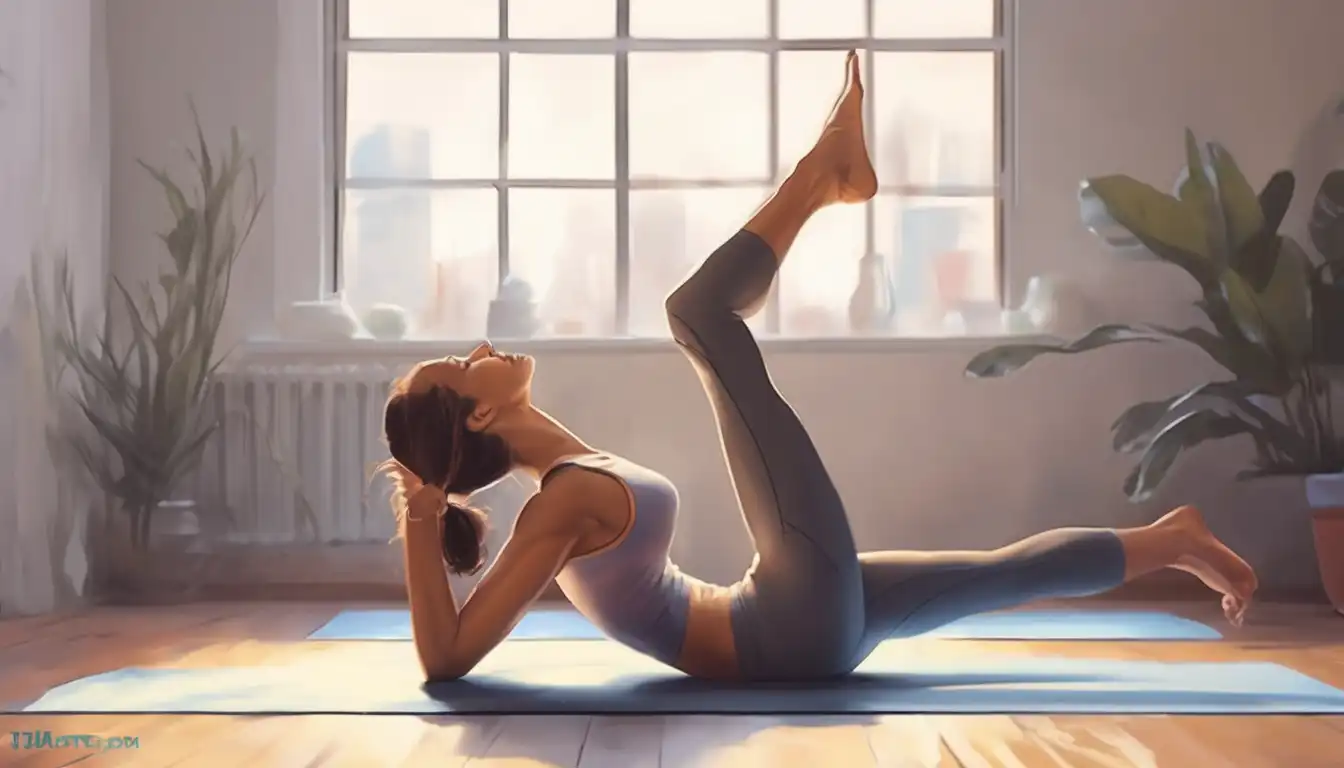Unlock Your Body's Potential: Essential Stretches for Flexibility and Relaxation
In today's fast-paced world, maintaining flexibility and finding moments of relaxation are crucial for overall well-being. Whether you're an athlete looking to improve performance or someone seeking relief from daily stress, incorporating the right stretches into your routine can transform your physical and mental health. This comprehensive guide covers the most effective stretches designed to enhance flexibility while promoting deep relaxation.
Why Flexibility and Relaxation Matter
Flexibility isn't just for gymnasts and dancers—it's a fundamental component of functional movement that affects everyone. Improved flexibility enhances joint mobility, reduces injury risk, and alleviates muscle tension. When combined with relaxation techniques, stretching becomes a powerful tool for stress reduction and mental clarity. Regular stretching practice can help combat the negative effects of sedentary lifestyles and high-stress environments.
Essential Stretches for Full-Body Flexibility
1. Standing Hamstring Stretch
This classic stretch targets the back of your thighs, which often become tight from prolonged sitting. Stand with feet hip-width apart, extend one leg forward with heel on the ground and toes pointing up. Gently lean forward until you feel a comfortable stretch in your hamstring. Hold for 30 seconds and switch sides. This stretch improves lower body flexibility and can help prevent back pain.
2. Child's Pose
A restorative yoga position that promotes deep relaxation while stretching the back, hips, and shoulders. Kneel on the floor, sit back on your heels, and fold forward until your forehead rests on the ground. Extend your arms forward or rest them alongside your body. Breathe deeply for 60 seconds, allowing tension to melt away. This pose is perfect for winding down after a long day.
3. Cat-Cow Stretch
This dynamic duo increases spinal flexibility and releases tension in the back and neck. Start on hands and knees. For cow pose, inhale as you drop your belly and lift your head and tailbone. For cat pose, exhale as you round your spine and tuck your chin. Flow between these positions for 10-15 repetitions, synchronizing movement with breath.
4. Quadriceps Stretch
Tight quads can lead to knee and hip issues. Stand near a wall for support, bend one knee and grab your ankle, gently pulling your heel toward your glutes. Keep knees together and avoid arching your back. Hold for 30 seconds per side. This stretch is particularly beneficial for runners and cyclists.
5. Seated Spinal Twist
Improve spinal mobility and digestion with this gentle twist. Sit with legs extended, bend your right knee and cross it over your left leg. Place your left elbow on the outside of your right knee and twist to the right. Hold for 30 seconds, then switch sides. This stretch also helps relieve lower back discomfort.
Advanced Stretches for Greater Flexibility
Once you've mastered the basics, these advanced stretches can take your flexibility to the next level. Remember to warm up properly and never force any movement beyond your comfort zone.
Pigeon Pose
This deep hip opener addresses tightness in the glutes and hip flexors. From hands and knees, bring your right knee forward toward your right wrist, with your right foot angled toward your left wrist. Slide your left leg back, keeping hips square. Hold for 60 seconds per side, breathing deeply into any areas of tension.
Forward Fold with Clasped Hands
Stand with feet hip-width apart, interlace fingers behind your back, and fold forward while raising your arms overhead. This stretch targets shoulders, hamstrings, and the entire back body simultaneously. Hold for 30-60 seconds, allowing gravity to deepen the stretch naturally.
Creating Your Stretching Routine
Consistency is key when working toward improved flexibility and relaxation. Aim to stretch at least 3-4 times per week, holding each stretch for 30-60 seconds. Morning stretches can energize you for the day ahead, while evening routines promote better sleep. Always listen to your body and avoid bouncing, which can cause injury.
Breathing Techniques for Enhanced Relaxation
Proper breathing transforms stretching from mere physical exercise into a mindfulness practice. Try the 4-7-8 technique: inhale for 4 counts, hold for 7 counts, and exhale for 8 counts. This pattern activates the parasympathetic nervous system, promoting deep relaxation. Combine this breathing with your stretches for maximum benefit.
Common Mistakes to Avoid
Many people undermine their stretching efforts through common errors. Never stretch cold muscles—always warm up with light activity first. Avoid comparing your flexibility to others, as everyone's body is different. Don't hold your breath during stretches, and never push through sharp pain. Remember that flexibility develops gradually over time.
When to Stretch for Optimal Results
Timing your stretching sessions can enhance their effectiveness. Dynamic stretches are best before workouts to prepare muscles, while static stretches are ideal post-workout or before bed. Consider incorporating short stretching breaks throughout your workday to combat the effects of prolonged sitting.
Complementary Practices
Combine stretching with other wellness practices for comprehensive benefits. Yoga integrates stretching with strength and balance work, while foam rolling can address deeper muscle tension. Meditation paired with stretching creates powerful mind-body connection, enhancing both flexibility and mental relaxation.
Tracking Your Progress
Monitor your flexibility journey by noting improvements in your range of motion and reduction in muscle tension. Keep a simple journal recording which stretches feel easier over time. Celebrate small victories, like touching your toes for the first time or noticing reduced stiffness in the morning.
Safety Considerations
While stretching is generally safe for most people, those with existing injuries or medical conditions should consult healthcare providers. Pregnant individuals should modify stretches and avoid positions that compress the abdomen. If you experience persistent pain during or after stretching, seek professional guidance.
Incorporating these stretches into your daily routine can significantly improve your flexibility while providing much-needed relaxation. Remember that consistency and patience are more important than intensity. Start with the basic stretches and gradually progress as your body adapts. Your journey toward greater flexibility and relaxation begins with that first stretch—take it today and experience the transformative power of mindful movement.
